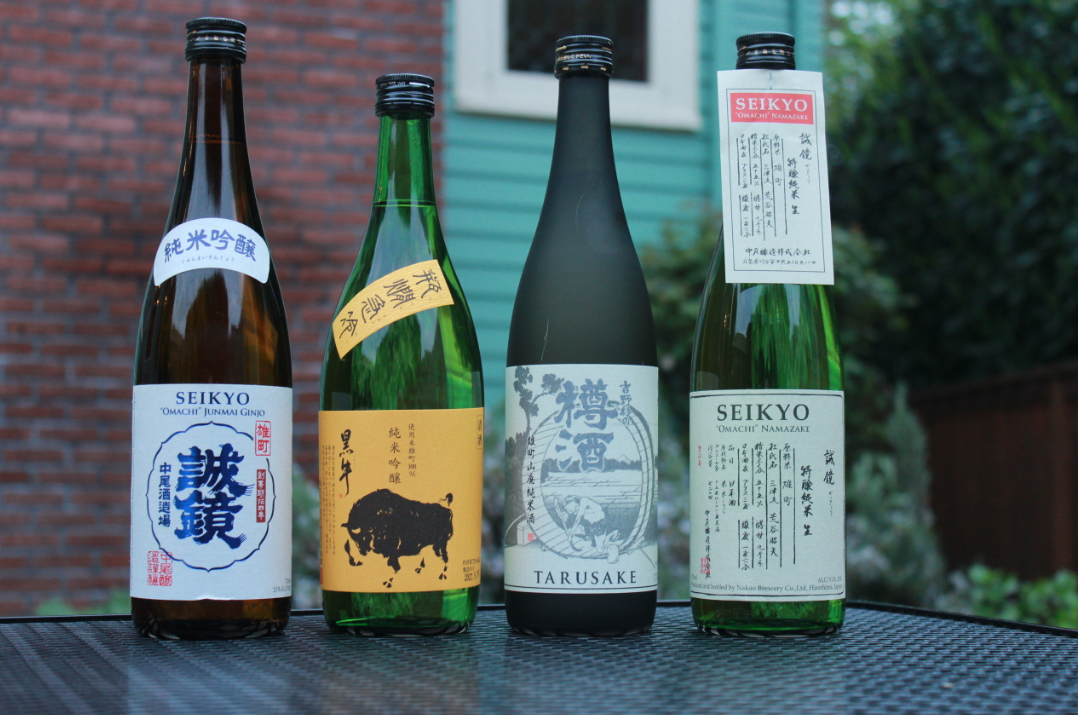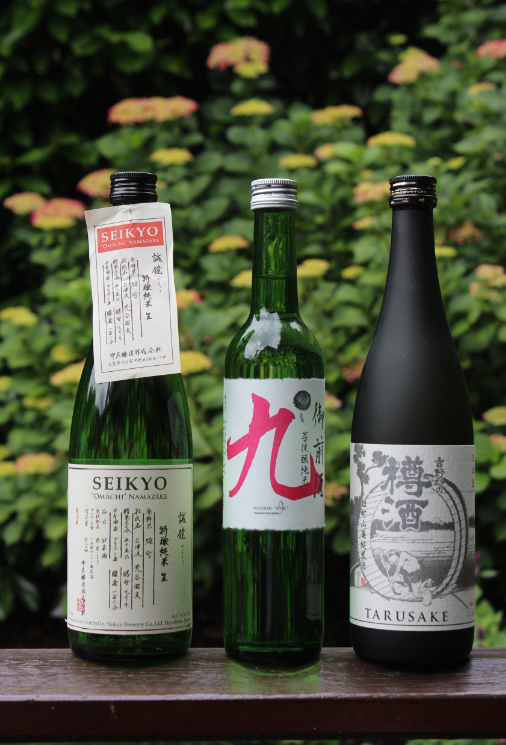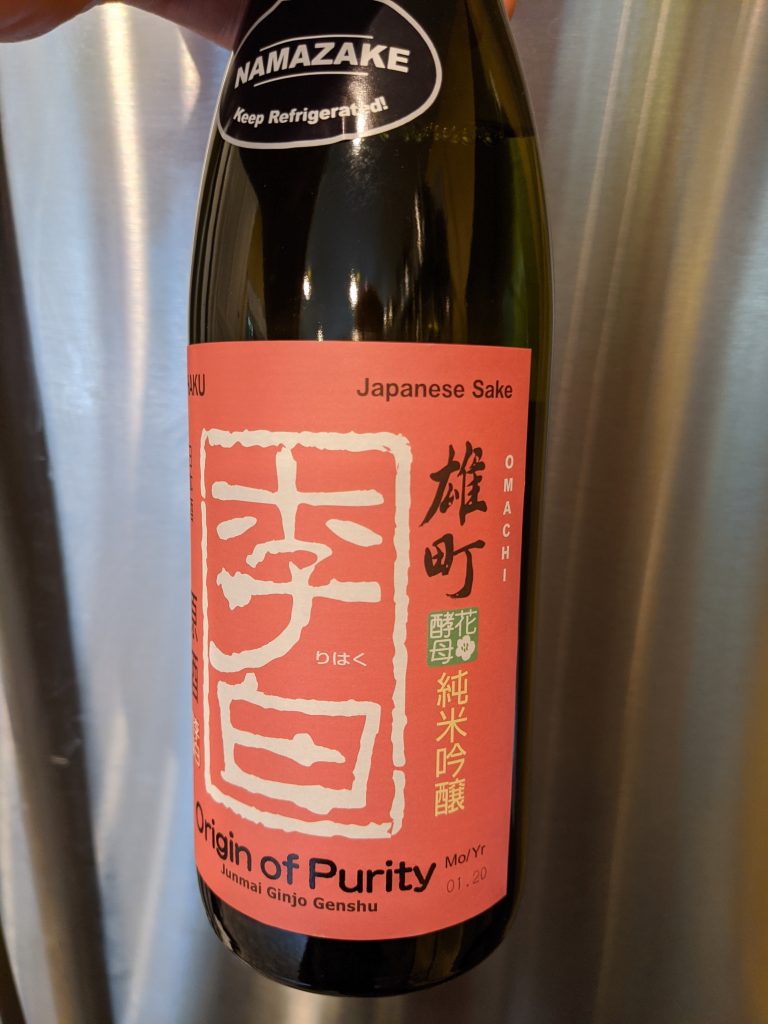
Sake review:Sake made with Omachi
Omachi is the elusive pinot noir of Sake. It’s difficult to grow and shows the skill and character of the producer. It is an heirloom varietal developed by a farmer named Kishimoto prior to the 1860s. It was the dominant premium sake rice until the 1920s when Yamada Nishiki was developed. As with many heirloom rice it fell out of favor because it is more difficult to grow. At over 5ft tall it becomes susceptible to tipping over and rotting before harvest. It is the only non-crossbred rice in Japan today and more than 70% of all varieties of sake rice belong to the Omachi family. But today, pure Omachi is most often only grown in Okayama and neighboring prefectures.
Even though it is one of the oldest rice varieties it accounts for less than 2% of all Sake. The rice grains are big with a large core (called a shinpaku) that absorbs yeast well so we get a strong fermentation however, the grain is soft and round instead of flat and hard like Yamada Nishiki. As such, Omachi is rarely polished to Dainginjo levels. We do have Seikyo taking it down to 55% for you though!
Given the good fermentation and higher polish levels, Omachi Sake tend to have great texture and a clean finish with just a hint of binding action making them perfect for food. They can lean towards earthy and herbal but also cold steel and blueberry flesh.Typically I like to drink Sake at 50F to 60F but you might try letting these come to room temp too.
Tasting Notes on Omachi Sake

Seikyo Omachi Junmai Ginjo Namazake
The cool nose features jasmine and cold steel. Imagine being first to the playground bars at recess(!) The mouthfeel is luxurious, spreading easily. There’s wonderful honeydew melon and Meyer lemon but importantly it’s not over the top. There’s still finesse with just the right amount of persimmon tightness on the finish. That tightness can sometimes be more astringent with Omachi but not here. It’s cleansing, not puckering. If you pair this with shrimp you might get a blast of blueberry flesh.
Gozenshu 9 Bodaimoto Junmai
Gozenshu is led by Okayama’s first female master brewer Maiko Tsuji (7th generation of the family). She is moving towards doing 100% Junmai Omachi. This Sake is the more elegant cousin of the usu-nigori from her, also Bodaimoto and Omachi. The nose is pleasant with rice and some green banana. There’s a medium mouthfeel dominated by grain and earth. The roundness reminds me of cocoa fat because of the dry depth. Salted foods, dramatically change the Sake and bring out tangerine flesh. Delightful. 500ml.
Gozenshu “Misty Mountain” Usu-Nigori Bodaimoto Junmai
It pours slightly cloudy pure white as this is light (usu) Nigori. There’s some snow globe particles too 😀. Smells like oysters and lychee but with an enjoyable sour note along with rice grain. The palate is incredibly complex dancing between rice grain, lychee and white mushroom. There’s a balanced acidity on the finish which lingers on the back of your mouth. Eat this with aged fish and tinned seafood. Clam chowder too, but don’t forget the salt to unlock the umami.
Bodaimoto dates to 700 AD in the Nara region. Monks would let a mixture of steamed and raw rice sit outside until it started to sour due in part to naturally occurring lactic acid in the special water of Nara, then use that water to start the sake brewing process. In this low pH environment, the raw rice actually malts (saccharification) whereas polished rice can’t.
Rihaku “Origin’s of Purity” Omachi Junmai Ginjo Nama Genshu

Founded in 1882 and from Shimane, Rihaku is named after the famous Chinese poet from the 8th century, Li Po, who was known to drink a big bottle of sake and write a hundred poems. It pours clear then we are treated to enticing aromas of blackberry lemonade and hazelnut. Some of these aromatics are likely due to the yeast propagated from a vine rosebud. Use of flower yeasts is really hot right now in Sake. On the palate, there’s the telltale iron too, common of Omachi rice (a pure rice strain discovered in 1859). The palate is a bit plusher with fleshy blueberry, then back to iron and nuts again on the clean finish. The fun here is the fleshy mid-palate which I’d pair with salty popcorn, cured duck or black cod. Omachi and duck are often a great pairing.
Choryo Yoshinosugi Omachi Taru Yamahai Junmai “Cedar Country" 3 year aged
Most Taruzake or cedar aged sake isn’t the best quality going into the barrel. The cedar is introduced to cover lower grade sake or for ceremonial purposes.This however, is an entirely different equation. This is not only the heirloom Omachi but it’s also brewed in the Yamahai style meaning the acidity is developed through a warm lactic fermentation prior to the primary fermentation. There’s cedar on the nose with a bit of leather behind it. The attack sees some of the cedar again but then quickly ushers in the mellow leather of yahamai and a hint of hazelnut on the palate. The extended finish introduces even more complexity with celery and white pepper. That celery is another flavor you can find in Omachi. Notice too the difference in finish between the white pepper here versus the persimmon in the Seikyo. Just different types of mild astringency.
I want you to make some white rice (I like Koshihikari) or buttered baguette and top with the salmon roe. Open this Sake and enjoy pure harmony.
Kuroushi “Black Bull" Junmai Ginjo
The bottle features the orange color often associated with Omachi. It pours an off yellow with dusty and earthy aromas of wheat chaff. I chose this because it pulls in a totally different direction than the Seikyo above. The palate is creamy with good round fruit notes. There’s grain on the finish with more of the rice character returning. Enjoy this with cheeses and grilled white fish such as Halibut.
Akishika Shuzo
Founded in Osaka prefecture in 1886 and under Hiroaki Oku, the present 6th generation Kuramoto (owner) and Toji (brew master). The contract with local farmers to grow rice for his Sake and also grows it himself.Although Oku-san has grown all of his rice organically for many years, from 2011 he obtained certification for organic rice cultivation – a very difficult process in Japan. They are 100% Junmai Muroka (pure rice, no charcoal filtration). Akishika Shuzo have two years worth of production ageing at any one time, a massive investment particularly for such a small brewery. I’ll have a couple more from this awesome, tiny brewery soon but thought you might want a sneak peek.
2018 Akishika Omachi Yamahai Junmai Muroka Namazake Genshu
Pours light yellow. Great aromas of grain and savory shiitake. Palate is rich, with lots of nuts. The Omachi brings balance to the age with the characteristic tightness on the finish. With salt, beautiful persimmon sweetness opens up, then celery on the finish. The taught finish lingers.
2016 Akishika Black Moheji Omachi Kimoto Junmai Muroka Nama Genshu
Pours yellow with a nice nose of celery seed and jasmine. The palate is round but not fruity. We get waves of nuts, graham cracker, hazelnuts, rye, growing darker as it sits across your palate. This is incredibly elegant. Salt brings out the sweetness pushing things brighter towards brazil nuts and wafer crackers.




